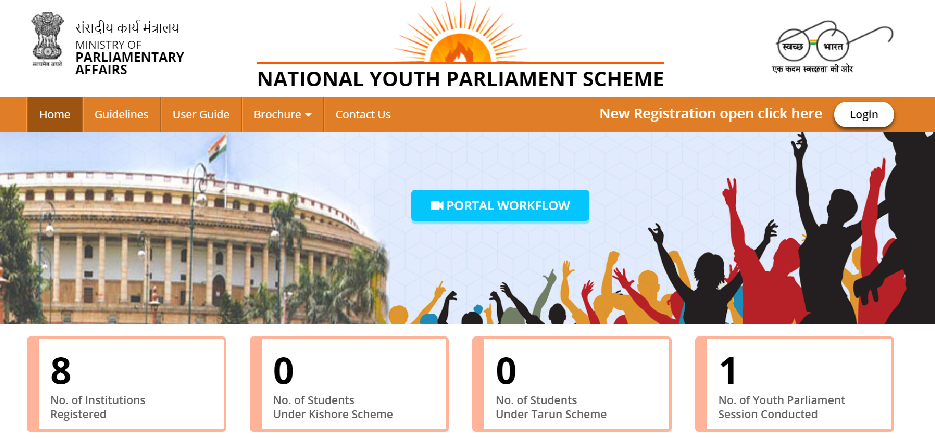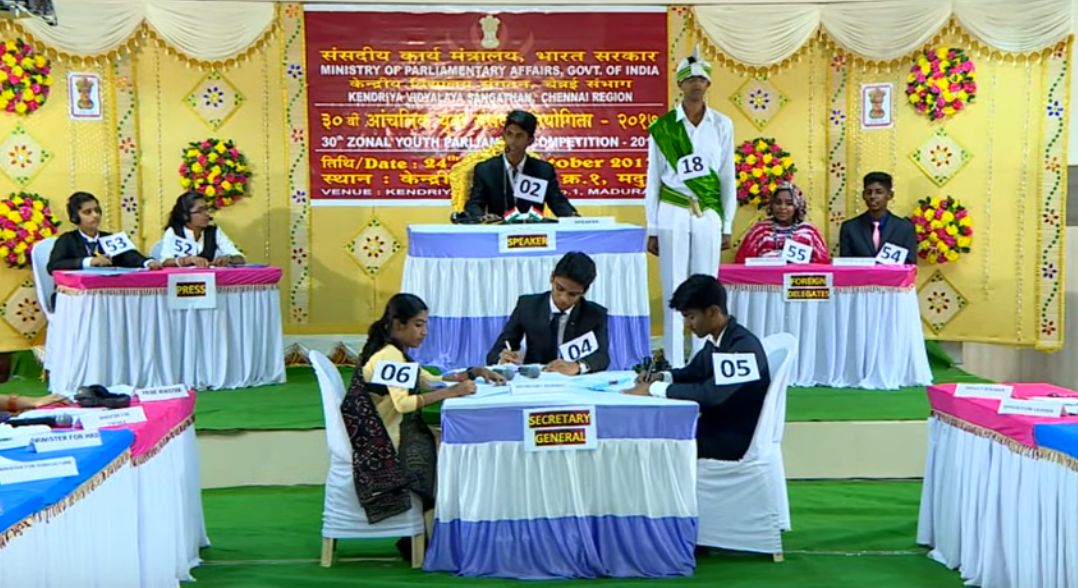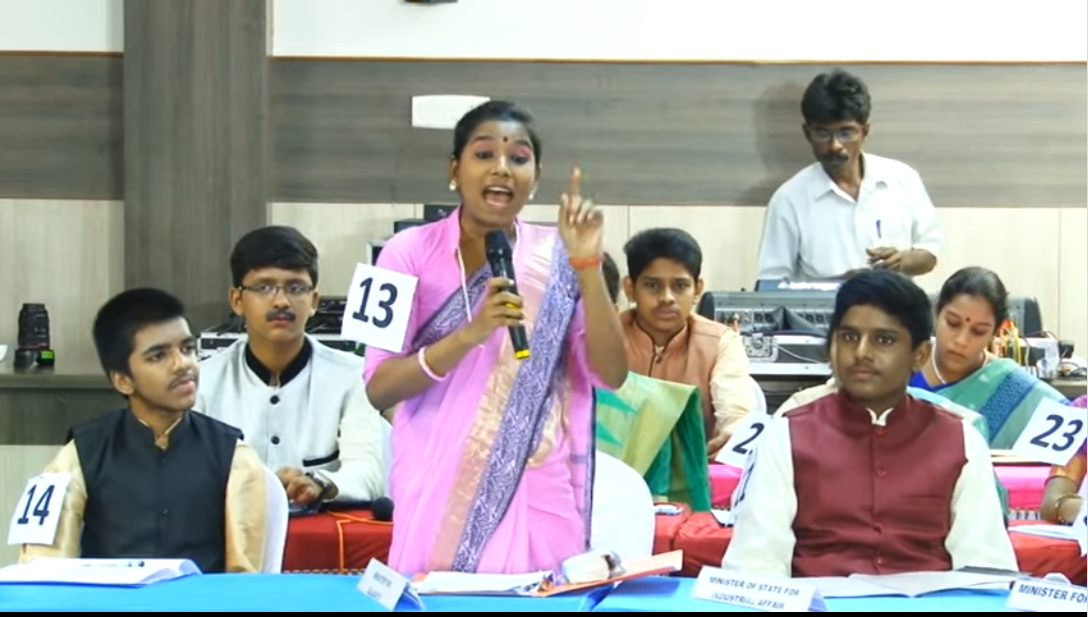Universities avoid portal of Youth Parliament, UGC comes with a letter
The flagship web portal was launched by the President of India in presence of Vice President, Prime Minister, and Minister of Parliamentary Affairs but only four schools and four high educational institutions have registered in the past one month.

- Country:
- India
After one month of its launch, only eight educational institutions across India have registered on the portal of the National Youth Parliament Scheme for conducting ‘Youth Parliament Competitions’ in their campuses. Out of these eight registrations, four each are from schools and higher education institutions.
Interestingly, not even a single university has registered on the web portal to conduct the ‘Youth Parliament Competition’ since the launch of the portal. The higher educational institutions registered on the website are – IIIT Nagpur, IIIT Una, NITTTR Chandigarh and Dr. B. R. Ambedkar NIT Punjab. However, till date only one educational institute – DAV Inter College - has reportedly conducted the Youth Parliament Competition.
The flagship web portal of the National Youth Parliament Scheme was launched on 26 November this year by the President of India Mr. Ram Nath Kovind in presence of the Vice President Mr. Venkaiah Naidu, Prime Minister Mr. Narendra Modi, Speaker of the Lok Sabha Mr. Om Birla and Minister of Parliamentary Affairs Pralhad Joshi in the Central Hall of Parliament on the occasion of the Constitution Day. It was aimed at strengthening the roots of democracy, inculcate healthy habits of discipline, tolerance of the views of others and to enable the student community to know about practices and procedures of the Parliament.

Caption: A Youth Parliament in 2017
Though Youth Parliament Competition is not a new program, it is a flagship project of the Ministry of Parliamentary Affairs conducted across campuses since 1966. The only new element in this program is – coordination and management through a web portal. But it seems the digitization has miserably failed to achieve the goals of the ministry. It is also lagging behind the previous non-digital format in organizing the youth parliament competitions throughout the country.
The data on the web portal indicate towards disillusionment of the students, faculty as well as institutions on conducting the Youth Parliament Competitions. Besides, the government agencies also seem to lack a proper plan to create interest among stakeholders and are groping in the dark. The University Grants Commission (UGC) on 26 December issued a letter asking all the universities and higher educational institutions in the country to register on the website portal by 31 December, 2019 for conducting the competitions in their campuses. As there was no response, the last date silently changed to 31 January, 2020 which is the last date of organizing the event.
Schedule was Pre-decided
Interestingly, the schedule of conducting youth parliament competitions in educational institutions from school to higher education is already fixed and displayed on the website. It should be conducted in two cycles of winter and summer in two categories – Kisore Sabha for school students and Tarun Sabha for UG and PG students. Any educational institution interested in the cycle 1 (winter) is required to register on the web portal in October and conduct the event between 15 November and 31 January while those interested in Cycle 2 should register in April and organize the Youth Parliament Competition in May or June.

What went wrong?
Information Technology (IT) can do a lot but not all for the youths. This is a classical case to test this statement. The change IT has made in organizing the youth parliament competitions could be understood through the following comparison.
- In the pre-digital age, the educational institutions throughout the country were divided into six to seven zones. The winner teams at the zonal level were selected for national level competition at a pre-decided venue.
- The youth parliament competitions at the institute level were judged by a panel of three judges comprising a sitting or former Member of Parliament (MP) nominated by the institute, an expert nominated by the institute and an academician selected as Zonal Coordinator by the Ministry.
- The final national level competition was generally organized in presence of the Minister of Parliamentary Affairs who used to confer awards to the students and faculty members.
As per the new rules of the digital age, the institutes have been asked to register on the website and organize the events in their campuses in presence of an incumbent or former legislator (MP or MLA) or an expert as chief guest. There will be no evaluation at the institute level. Thereafter, the institute coordinator will photos of the event on the website and download the ‘certificate of participation’ for students and ‘certificate of appreciation’ for faculty members from the web portal on pre-decided dates.
Thus, in its ambition to manage everything online, the ministry probably forgot to accommodate the socio-psychological aspects of organizing an event of youths at regional and national level. In its endeavor to save a few bucks which it incurred as expenditure in organizing regional and national level competitions, the planners seem to have compromised with the enthusiasm and fun of the event. Can internet and digital technology replace the fun of social interaction, face to face interaction, participating in an event, tourism and cultural exchange? This is a larger question the policy makers need to think upon.
(Disclaimer: The opinions expressed are the personal views of the author. The facts and opinions appearing in the article do not reflect the views of Devdiscourse and Devdiscourse does not claim any responsibility for the same.)
- READ MORE ON:
- Universities
- University
- Youth Parliament
- portal of Youth Parliament
- UGC
- University Grants Commission
- Youth Parliament Competitions
- National Youth Parliament Scheme
- IIIT Nagpur
- IIIT Una
- NITTTR Chandigarh
- Dr. B. R. Ambedkar NIT Punjab
- President of India Mr. Ram Nath Kovind
- Vice President Mr. Venkaiah Naidu
- Prime Minister Mr. Narendra Modi
- Speaker of the Lok Sabha Mr. Om Birla
- Minister of Parliamentary Affairs Pralhad Joshi
- Central Hall of Parliament
- FIRST PUBLISHED IN:
- Devdiscourse










